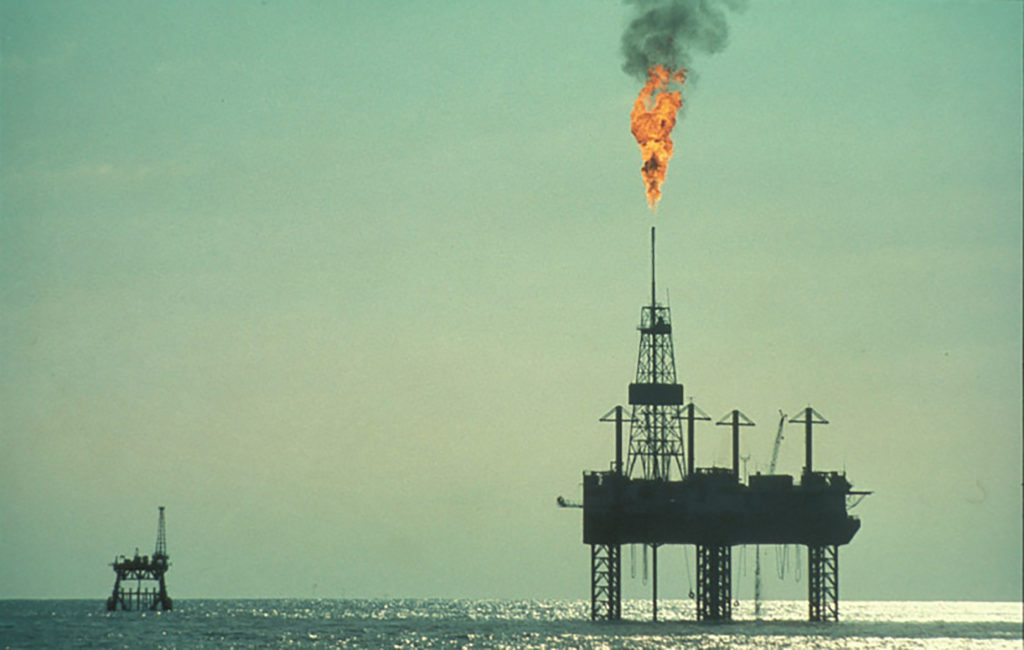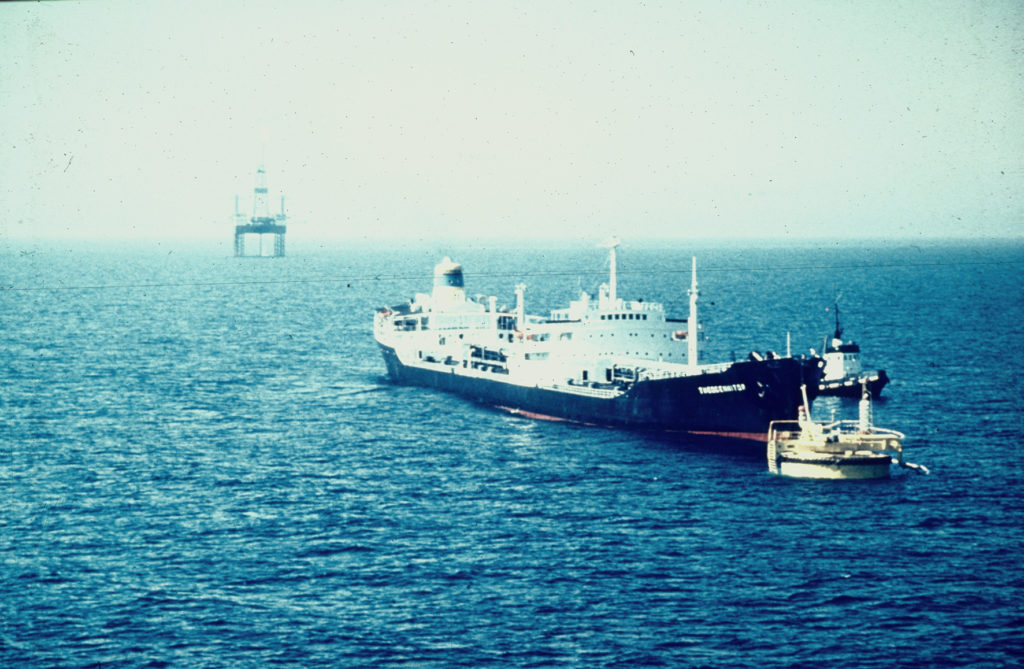Gulftide
- Jack-up drilling rig
- Built 1967 in Glasgow for Ocean Drilling & Exploration Co.
- Began test production on Ekofisk 15 June 1971
- Produced on Ekofisk until 1974

 gulftide,
gulftide,A mere 17 months after the Ekofisk discovery was announced in December 1969, Gulftide was ready to come on stream as a temporary production platform.
Its official inauguration took place on 9 June, with initial test output commencing on 15 June. Full production began on 8 July.
The rig was chosen because it was available on the market. Established equipment for processing oil and gas was tailored to the limited space on board. Separate flowlines carried wellstreams from four subsea wells. Oil, gas and water were separated on board, with the gas flared and the oil piped to two buoys for loading into shuttle tankers.
Work on the process equipment was relatively simple. The problem was to tailor it to the rig. The subsea wellheads had to be reinforced to meet the demands posed by the North Sea, and a buoy loading system needed to be developed for waters where this technology had never been used before.
To gain time, it was decided that the three appraisal wells drilled by Ocean Viking to map the extent of the field – in addition to the discovery well – would be completed for production.





The producers would be topped with hydraulically controlled wellheads. Such equipment had been tried out on the seabed earlier, but on a limited scale and not in the deep and rough waters found on Ekofisk. This challenge was overcome by having the wellheads manufactured and then reinforced at the Phillips base in Dusavik outside Stavanger. Flowlines and control cables would also be laid from each well to Gulftide, with production comingled in a single riser to the topsides.
Weather conditions also represented a major problem when designing the loading buoys. Phillips itself had experience with such facilities, but the concept had only been used before in harbour-like conditions and waters no deeper than 27 metres. They were now to stand in 70 metres in the middle of the North Sea.
Gulftide was converted in the Åmøy Fjord outside Stavanger to cope with conditions on Ekofisk. The processing facilities were installed and reinforcements made to the derrick, helideck, hangar and leg structures.
 Gulftide, Ekofisk 2/4 A, boretårn, flare, 1971, utbygging,
Gulftide, Ekofisk 2/4 A, boretårn, flare, 1971, utbygging,Planning began in late 1970, when Phillips received approval to begin laying the flowlines between wellheads and rig. Brown & Root won this contract, with the first oil pipelines on the Norwegian continental shelf laid by the Hugh W Gordon laybarge.
The production principle on Gulftide was relatively simple. Output flowed from the subsea wellheads to the rig, where it passed through two separation levels to be split into oil and gas while the huge pressure was reduced.
Gas was flared off and the oil was piped to one of the loading buoys where a shuttle tanker was moored. Production could only take place when a ship was present.
 Offisiell åpning av norsk oljeproduksjon,
Offisiell åpning av norsk oljeproduksjon,As soon as one tanker had become fully laden, the oil flow was switched to the other buoy where another ship was waiting to take on cargo.
The problem with this approach arose when weather conditions meant the tankers had to cast off from the buoys because of strong winds or high waves. The rig then had to shut down production from the wellheads immediately.
Given the weather conditions found on Ekofisk, output regularly had to cease. Production was suspended for 20 per cent of the first year for this reason.
Output began cautiously on 8 July 1971 from a single well. The second producer came on stream that September, the third was ready the following month and all four were producing by February 1972. They each flowed 10 000 barrels of oil per day.
Source: Kvendseth, Stig, Giant discovery, 1988.
